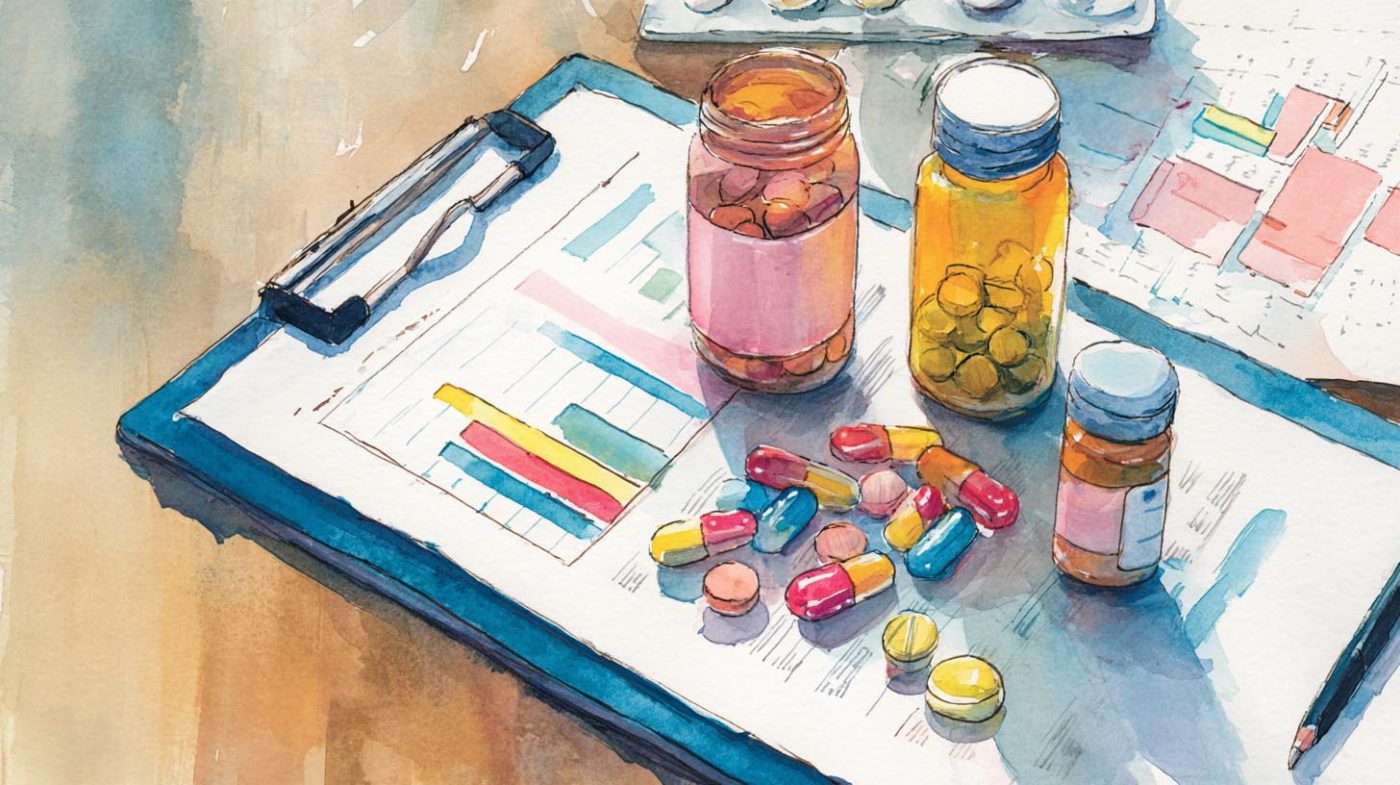If you’re taking a blood thinner, you’re on a vital medication designed to prevent serious conditions like strokes and blood clots. But with this powerful medication comes the responsibility of staying informed and vigilant. Knowing what’s normal, what’s a warning sign, and what to avoid can make all the difference in managing your health safely.
This guide breaks down everything you need to know into easy-to-understand “safety zones” and highlights crucial medication interactions.
The Green Zone: All Clear!
This is your safety zone – a sign that your blood thinner is working as it should and your health is stable. You’re in the green if you experience:
- No swelling
- No increase in shortness of breath
- No chest pain
- No active signs of bruising or bleeding
- Taking your medication every day at the same time
- Rotating injection sites (at least 4 inches from the navel, if applicable)
If you’re taking Warfarin:
- You get your International Normalized Ratio (INR) blood test regularly.
- Your diet has not significantly changed in regard to foods high in vitamin K (think green, leafy vegetables).
What this means for you: Your symptoms are under control. Continue taking your medications as prescribed, keep your diet consistent (especially if on Warfarin), attend all medical appointments, and refill your medications as needed.
The Yellow Zone: Caution – Call Your Physician!
The yellow zone signals a potential issue that needs professional attention. Don’t panic, but don’t ignore these signs either. It’s time to call your doctor if you experience any of the following:
- Black or tarry stools
- Vomit that looks like coffee grounds
- Bleeding at a surgical site
- Bleeding gums
- Bruises for no reason
- Blood in urine
- You are prescribed a new medication or start taking an over-the-counter medication.
- You have a scheduled procedure, surgery, or major dental work.
- You are pregnant or plan to become pregnant.
- Trouble affording your blood thinner or if your insurance won’t cover it.
- Trouble getting your blood thinner from the pharmacy.
- You miss doses or go without taking your blood thinner.
If you’re taking Warfarin:
- You don’t get your INR test regularly, or your results are out of range.
What this means for you: Your symptoms or test results indicate you might need an adjustment to your medications. Your doctor or pharmacist may adjust your blood thinner if you are prescribed any other new medications. It’s crucial to call your nurse or physician to evaluate these changes, as they could put you at risk of bleeding or clotting.
The Red Zone: Medical Alert! Take Action – Call 9-1-1 or Go to the Hospital!
This is a medical emergency. The red zone indicates a severe problem that requires immediate medical intervention. Call 9-1-1 or get to the hospital if you experience:
- Uncontrolled bleeding that you cannot stop in 5 minutes when pressure is applied.
- Frothy or pink sputum (spit).
- Bright red blood in your urine or stool.
- Severe stomach or back pain.
- Headache, dizziness, fainting, or body weakness that will not stop.
- You’ve had a major accident, serious fall, or hit your head (even if you don’t look hurt).
Critical Information: Other Medicines and Your Blood Thinner
It’s incredibly important to understand that many other medications can interact with your blood thinner, either reducing its effectiveness or increasing your risk of bleeding. Your blood thinner can also change how other medicines work. Always talk with your doctor or pharmacist about ALL medicines you take, including:
- Prescription medicines
- Over-the-counter medicines
- Vitamins
- Herbal products
Here are some common medicines you should absolutely discuss with your doctor or pharmacist before using:
- Pain relievers: Such as aspirin, ibuprofen (Advil, Midol, Motrin, Nuprin, Pamprin HB), naproxen (Aleve, Excedrin).
- Cold medicines: Such as Sine-Off and Alka-Seltzer.
- Stomach remedies: Such as cimetidine (Tagamet HB), bismuth subsalicylate (Pepto Bismol), laxatives, and stool softeners.
- Herbal products: Such as garlic, ginkgo biloba, and green tea.
Stay Safe, Stay Informed!
Managing a blood thinner requires diligence, but by understanding these safety zones and potential interactions, you empower yourself to live a healthier, safer life. Always communicate openly with your healthcare team about any concerns or changes.
Source: This material was adapted by Health Services Advisory Group (HSAG) Hospital Quality Improvement Contractor (HQIC), under contract with the Centers for Medicare & Medicaid Services (CMS), an agency of the U.S. Department of Health and Human Services, based on materials prepared and created by atom Alliance and IPRO.
Disclaimer: The contents presented do not necessarily reflect CMS policy. This information is intended for educational purposes only. HSAG does not represent or guarantee that this information is applicable to any specific patient’s care or treatment. This content does not constitute medical advice from a physician and is not to be used as a substitute for treatment or advice from a practicing physician or other healthcare provider.
- The Warm Embrace of Community: Looking Back at the Successful Harbor Point Friendsgiving
- Urinary Health Zones: A Simple Guide to Symptoms
- Medication Safety Guide: Use the Traffic Light System to Manage Your Health
- Pneumonia Self-Management Plan: Monitor Symptoms & Know When to Seek Help
- Social Isolation and Loneliness in Older Adults: What the Health Care System Can Do


